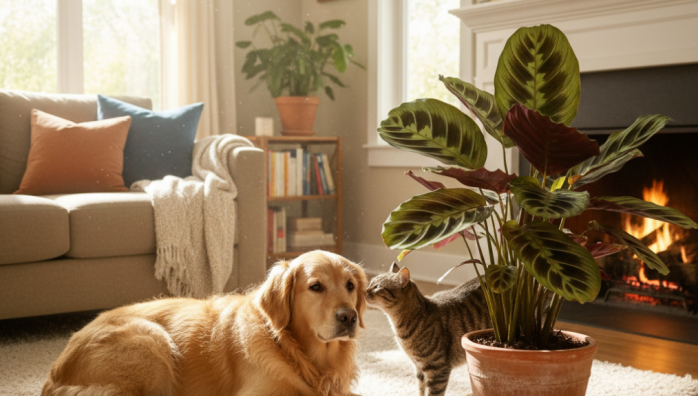Identifying Safe Houseplants for Cats and Dogs
by admin in Pet Care Basics 14 - Last Update November 16, 2025

I’ll never forget the moment I brought home my first beautiful fiddle-leaf fig. I was so proud of it, until I saw my curious cat, Leo, giving its leaves a tentative nibble. My heart sank. A frantic search online confirmed my fear: it was toxic. That experience was a wake-up call and sent me down the path of learning how to create a home that was both green and genuinely safe for my furry family. It\'s not just about avoiding the bad stuff; it\'s about confidently choosing the good stuff.
My personal journey to a pet-safe indoor jungle
Honestly, it felt overwhelming at first. The lists of toxic plants seemed endless. But over the years, I\'ve developed a simple system and a list of go-to plants that I trust completely. It’s less about memorizing a giant list and more about building good habits. My rule is simple: if I don\'t know for certain it\'s safe, it doesn\'t cross my threshold. This approach has given me so much peace of mind.
A few of my favorite tried-and-true safe houseplants
These are the plants you\'ll find scattered around my own home. They\'re resilient, beautiful, and most importantly, they\'ve passed the \'curious pet\' test time and time again without causing any harm.
The playful spider plant (Chlorophytum comosum)
This is probably the number one plant I recommend to fellow pet owners. They\'re incredibly easy to care for, and my cats absolutely adore batting at the little \'spiderettes\' that hang down. I\'ve learned that while they are non-toxic, they can have a mild, catnip-like effect on felines, which explains the attraction! It\'s harmless, but I still keep an eye on them to make sure they\'re not eating an entire meal\'s worth.
The elegant calathea family (Prayer Plants)
I\'m a huge fan of Calatheas. Their leaves are stunning, with intricate patterns, and they have a fascinating habit of folding up at night. I have several varieties, and I love knowing my dog can sniff around them without any risk. They do require a bit more humidity, but a regular misting keeps them happy.
The lush boston fern (Nephrolepis exaltata)
For that classic, leafy-green look, nothing beats a Boston Fern. I keep mine in a hanging basket, which naturally keeps it out of the main pet traffic zones. They are completely non-toxic, so there are no worries if a leaf happens to fall to the floor and get investigated by a curious snout. They love humidity and indirect light, making them perfect for bathrooms.
Plants I learned to strictly avoid
My journey also involved learning which popular plants are a definite \'no.\' The most critical ones I tell every new pet owner to avoid are any type of Lily (especially for cat owners, as they are lethally toxic), the Sago Palm (extremely poisonous to dogs), and Dieffenbachia (Dumb Cane). It\'s just not worth the risk when there are so many beautiful, safe alternatives.
Ultimately, creating a pet-safe environment is an act of love. It’s about being mindful and proactive. Before I buy any new plant, I still do a quick search on the ASPCA\'s plant database—it’s a simple habit that ensures our home remains a safe sanctuary for everyone. Remember, if you ever suspect your pet has ingested a toxic plant, please contact your veterinarian or an animal poison control center immediately. It\'s always better to be safe than sorry.










